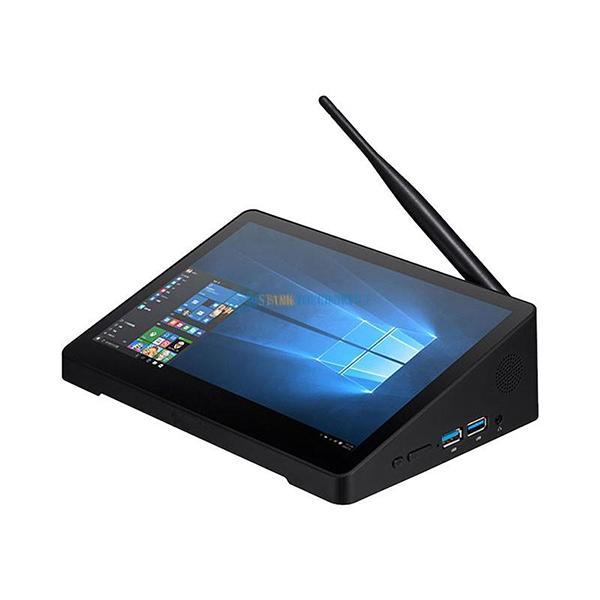Welcome STARK TOUCH DEVICE!
Solutions
Dust cleaning methods for the power interface of industrial control computers
Effective Dust Removal Techniques for Industrial Computer Power Supply Interfaces
Industrial computers operating in harsh environments often accumulate dust around power supply interfaces, leading to poor contact, overheating, or system failures. Proper cleaning methods are essential to maintain reliable performance without damaging sensitive components.

Understanding the Risks of Dust Accumulation
Power supply interfaces in industrial computers are prone to dust ingress due to constant airflow from cooling fans and exposure to manufacturing environments. Dust particles can clog ventilation slots, insulate heat-generating components, and interfere with electrical connections. Over time, this leads to reduced efficiency, increased operating temperatures, and potential hardware damage.
Key Contamination Sources:
Airborne Particles: Fine dust from industrial processes or environmental pollution.
Fibrous Debris: Textile fibers or packaging materials that adhere to surfaces.
Oxidation Residues: Metallic dust that oxidizes on contact points, increasing resistance.
Step-by-Step Cleaning Process for Power Supply Interfaces
1. Preparation and Safety Measures
Before cleaning, disconnect the industrial computer from all power sources and external devices. Wear anti-static wristbands or gloves to prevent electrostatic discharge (ESD), which can damage electronic components. Work in a well-ventilated area with minimal dust to avoid recontamination.
2. Initial Dust Removal with Compressed Air
Use a can of compressed air or an air compressor with a nozzle attachment to blow dust away from power supply interfaces. Hold the nozzle at a 45-degree angle to avoid forcing dust deeper into the components. Focus on:
Ventilation Grilles: Clear obstructions that block airflow.
Connector Pins: Remove dust from gold-plated contacts without touching them directly.
Fan Blades: Clean rotating parts to prevent imbalances that cause noise or vibration.
3. Detailed Cleaning with Soft Brushes
For stubborn dust trapped in crevices, use a soft-bristled brush designed for electronics. Gently sweep along the edges of power supply interfaces, avoiding excessive pressure that could scratch surfaces or dislodge components. Pay attention to:
Slot Connectors: Clear debris from PCIe or SATA power slots.
Screw Threads: Remove dust from mounting holes to ensure secure installation.
Cable Connectors: Clean both male and female ends of power cables to prevent poor contact.
4. Addressing Oxidation on Contact Points
If connector pins show signs of oxidation (discoloration or rough texture), use a cotton swab dipped in isopropyl alcohol (70% concentration or lower) to gently wipe the surfaces. Allow the alcohol to evaporate completely before reconnecting power. Avoid using abrasive materials that could remove the protective gold plating.
Advanced Techniques for Persistent Contamination
Using Contact Enhancers for Oxidized Pins
For severely oxidized connectors, apply a small amount of electrical contact cleaner spray to a lint-free cloth and wipe the pins. These cleaners often contain mild solvents that dissolve oxidation without leaving residues. Ensure the product is labeled safe for electronic use and test it on a non-critical component first.
Deep Cleaning with Microfiber Cloths
After initial dust removal, dampen a microfiber cloth with distilled water (no chemicals) and wring it out thoroughly. Wipe the exterior of the power supply unit to remove surface grime. For internal components, use dry microfiber swabs to clean hard-to-reach areas without introducing moisture.
Preventive Maintenance Strategies
To reduce future dust buildup:
Install Dust Filters: Attach magnetic or screw-on filters to intake vents to trap particles before they enter the chassis.
Seal Openings: Use foam gaskets or silicone sealant to close unused expansion slots and drive bays.
Schedule Regular Inspections: Incorporate power supply cleaning into monthly maintenance routines, especially in dusty environments.
Common Mistakes to Avoid During Cleaning
Using Vacuum Cleaners: The suction force can generate static electricity or dislodge small components.
Applying Excessive Liquid: Moisture can short-circuit circuits or corrode metal parts.
Skipping ESD Precautions: Static discharge can irreparably damage sensitive electronics.
Reassembling Incorrectly: Ensure all cables and components are securely reconnected to avoid loose connections.


